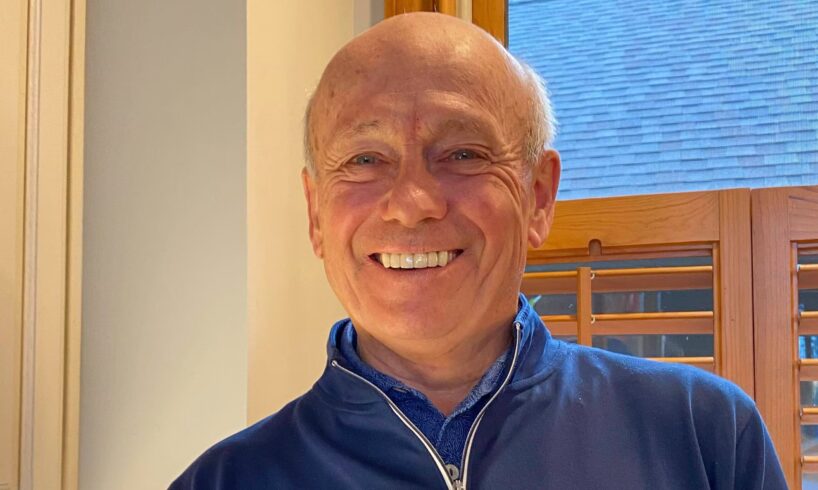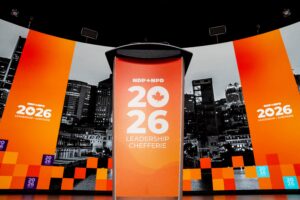
Peter Howitt is a professor emeritus at Brown University. He and French economist Philippe Aghion were jointly awarded half of the Nobel Prize for their work on modelling the ‘creative destruction’ that fuels economic growth.
The Associated Press
It was a prompt and persistent Swedish reporter who alerted Peter Howitt to the fact that he’d won the Nobel Prize for Economics, before the Royal Swedish Academy of Sciences managed to reach him with the news.
The Canadian economist turned off his phone when he went to bed on Sunday night, but a reporter got through to his wife’s number right after the announcement in Sweden on Monday morning. Prof. Howitt was completely caught off guard, without a bottle of champagne in the house.
“I’m just thrilled,” he said in an interview with The Globe and Mail from his home in North Carolina, adding, “It brings back a flood of memories of things, and people have e-mailed me that I haven’t been in touch with for years. It’s hard to explain.”
Prof. Howitt and his research partner, French economist Philippe Aghion, were jointly awarded half of the Nobel Prize for their work on modelling the “creative destruction” that fuels economic growth. The other half of the prize went to Joel Mokyr, a Dutch-born economic historian who also studies how breakthroughs feed economies.
Prof. Howitt grew up in Guelph, Ont., and got his undergraduate degree at McGill University and his master’s at the University of Western Ontario. After completing his PhD at Northwestern University, he spent nearly two decades as a professor at Western, before finishing his career at Brown University, where he is a professor emeritus.
Canadian Peter Howitt among Nobel prize winners in economics
It was during his time at Western that he and Prof. Aghion wrote the seminal 1992 paper the Nobel committee spotlighted. Entitled “A Model of Growth Through Creative Destruction,” it created a mathematical model of innovation and economic growth, building on the work of Austrian economist Joseph Schumpeter, who coined the term “creative destruction” decades earlier.
The Nobel committee explained the co-authors’ insights in almost Darwinian terms: Companies and jobs are continually replaced and disappear, and that turnover is the foundation of economic growth. A company that creates a better product or more efficient process can climb to the top of the market, creating incentive for other companies to invest in research and development, and to innovate themselves, in hopes of reaping the rewards at the top of the food chain.
“New economic growth depends upon new ideas. New ideas come from disruptive people that are going to challenge the status quo,” Prof. Howitt said. “But what happens is that if those disruptive individuals become successful, they become the status quo that try to prevent the next round of innovations from displacing them.”
Competition policy is essential to keeping this in check, he said. That is one of many collision points – both subtle and overt – between the current reality in the U.S. under President Donald Trump and the findings of this celebrated 33-year-old economic paper.
Open this photo in gallery:
Prof. Aghion, shown here in Paris, and Prof. Hewitt wrote a paper in 1992 that created a mathematical model of innovation and economic growth.Thibault Camus/The Associated Press
“The laureates’ work shows that economic growth cannot be taken for granted,” said John Hassler, chair of the committee for the prize in economic sciences. “We must uphold the mechanisms that underlie creative destruction, so that we do not fall back into stagnation.”
In a press conference hosted by Brown University on Monday, Prof. Howitt warned, “I see dark clouds ahead.” He underlined that the innovations that have created an ever-improving standard of living for the last few centuries have relied on collaboration between academia, business and government.
“This hostility that we now see between the U.S. government and academic research, I think is highly threatening to U.S. economic leadership,” he told The Globe.
What’s more, private industry has incentive to take leaps and invest when it knows it will have access to the widest possible market for its successful innovations, Prof. Howitt said. Even a market as large as the U.S. will “blunt the incentive” when the country is using tariffs to slam its doors on the rest of the world.
His work underlines that leaps of innovation produce losers as well as winners. If growth is to continue, it’s necessary to account for those who get the short end of the stick – both companies and workers – and to find them a place in whatever new world takes over from the old.
“The models of economic growth that we had before, not only did they take technological progress as given, but they just assumed that everyone benefited from them, that technological progress just sort of fell like manna from heaven, and everybody got their share of it,” Prof. Howitt said.
Joel Mokyr, Philippe Aghion and Peter Howitt won the Nobel memorial prize in economics Monday for ‘having explained innovation-driven economic growth.’
The Associated Press
He and Prof. Aghion have been collaborators for decades, building on their original paper, which now has a whopping 17,000 citations from other researchers who have stood on their shoulders. The Canadian half of the pair describes their “wonderful partnership” in terms of the fact that every vehicle needs an accelerator and a braking system; the energetic and dynamic Prof. Aghion is their gas pedal, while the quiet and deliberative Prof. Howitt describes himself as supplying the brakes.
They wrote their landmark paper in 1987 and it took five years to finally get it published in the prestigious journal Econometrica. Prof. Howitt remembers his research partner enthusing that they would win the Nobel Prize for it and insisting, as the years went by, that their time would come.
“Well, now it’s come,” Prof. Howitt said with softly pleased understatement, during the press conference. “So, amazing.”
Eventually, amid Monday’s whirlwind of interviews and e-mails and calls, his wife picked up some champagne, and in the late afternoon, their friends and neighbours came over to celebrate the newest Nobel laureate in economics. They borrowed some champagne glasses, so they had enough for everyone to raise a toast.





